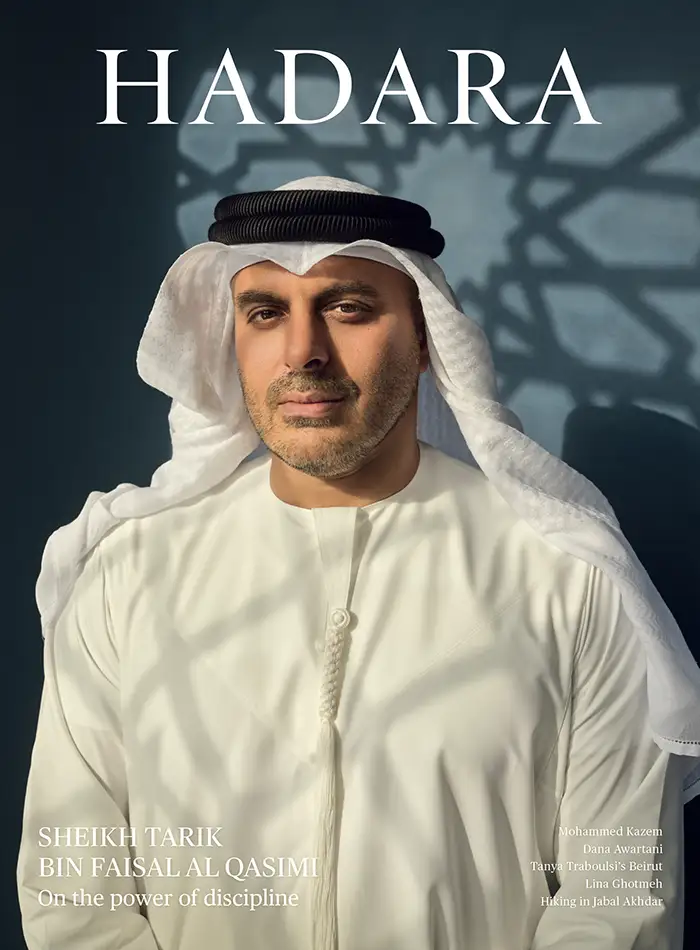A mountain divided
Lebanese-Palestinian-American photographer Rania Matar documents the lives of girls and women, capturing strength, resilience, creativity, and courage across cultures.
By India Stoughton
It began as a series of portraits of young women helping to rebuild Beirut after the devastating port explosion of August 2020. It has become a powerful testament to half a century of violence, upheaval, and tragedy—and half a century of Lebanese and Palestinian women displaying dignity, courage, and strength. 50 Years Later – Where Do I Go? is photographer Rania Matar’s years-long project marking the 50th anniversary of the Lebanese Civil War, a milestone that will be reached next April. Capturing young women across the country, it at once mourns all that has been lost and celebrates all that remains.
One young woman is photographed in a green floral dress, half camouflaged in a sea of wildflowers. Another lies on an old rug in an abandoned building, the word “Hell” scrawled on the wall behind her. A third is captured like a work of art come to life, draped over the sill of a window around which an elaborate frame has been spray-painted. Behind her is a mural of Marcelle Herro, who was crowned Miss Lebanon in 1972, creating a through line between the two women that spans half a century.
“Even though more than half of these women were not born during the civil war, it’s part of the collective memory which we all have,” Matar says. “They’re still affected by it every day.” Rather than dwelling on past violence, the series commemorates the conflict by paying tribute to the strength of women who are fighting for a better future for Lebanon today. “The women are not the ones creating these wars, conflicts and crises, but they are the ones who handle it with so much grace,” she says.
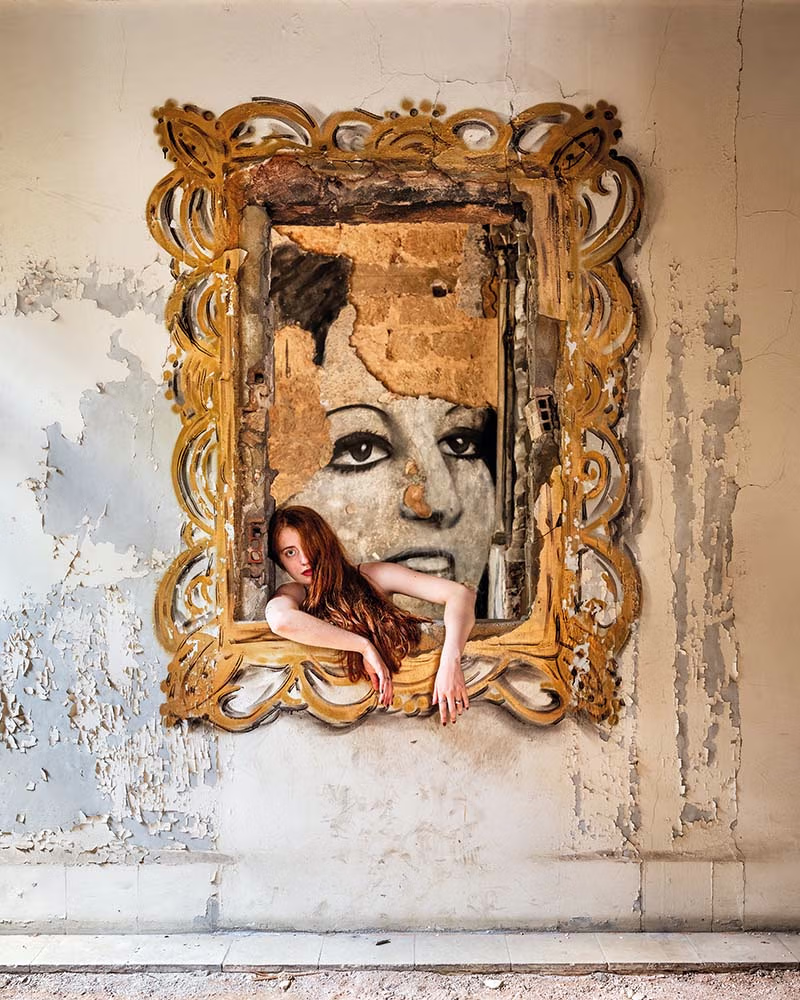
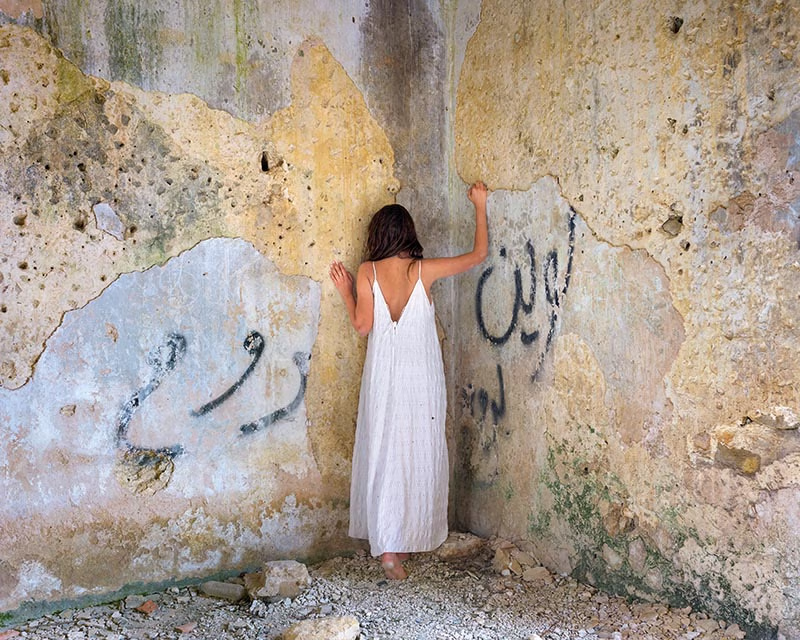
From the series 50 Years Later – Where Do I Go? In the opening image, Tara (In the Flowers), Bekaatat Kanaan, Lebanon (2022), Tara’s green dress blended with the lush landscape. A reminder of the raw beauty of Lebanon and welcome respite from its many challenges. Top, Petra (with Miss Lebanon 1972), Beirut (2022). Petra with a mural of Marcelle Herro. Both women are 20 years old in this photograph; one frozen in time in the glory days of Lebanon, the other in a contemporary Lebanon reeling from conflict and corruption. They are bookends to history [Murals by Brady Black]. Above, Perla, Where Do I Go (Lawen Ruh), Kfarmatta, Lebanon (2021). Part of the series 50 Years Later – Where Do I Go? After the Beirut port explosion and Lebanon’s economic collapse, many young women had to ask a difficult question: Do I stay or do I go? All images Courtesy of the artist and Galerie Tanit/Beirut
The series came into focus in 2021 after Matar photographed a young woman in a long white dress standing barefoot in the rubble of an abandoned building, graffitied with the words “lawen ruh” (where do I go). At that moment, “I realised the port explosion is just part of the linear history of the past 50 years in Lebanon,” Matar says. “It’s one more crisis, just like 2006, just like 2005, the economy collapsing… This is not only about the port. This is about the big picture.”
The project is also deeply personal. “I’m looking at my younger self, in a way,” Matar says. “I see myself in those young women.” Born in Lebanon in 1964, she trained as an architect. In 1984, at the age of 20, she left Lebanon to escape the civil war, transferring her studies from the American University of Beirut to Cornell University in upstate New York. Intending to stay only a few years, she ended up settling in the US, where she started a family. Almost 20 years later, as the mother of two sons and two daughters, she took up photography as a way of documenting family life.
“I fell in love with the craft, and it turned into very different pictures that I made of my kids than what I thought I would make,” she says. Inspired by Sally Mann’s moody black-and-white family portraits, she began to capture snippets of her children’s burgeoning inner worlds. A photo titled Morning Before School shows a girl lying in bed staring at a set of clothes laid flat on the floor, as though the girl meant to wear them has vanished or has yet to materialise. In another, she grins with delight, half-collapsed on a sofa, a pair of stilettos twice the length of her feet dangling precariously from her toes.
These intimate early portraits are at once deeply individual and appealingly universal, capturing an innocence and playfulness that transcend time and place. It’s a compelling duality that has come to characterise Matar’s projects, which often address themes of identity, belonging, and metamorphosis.
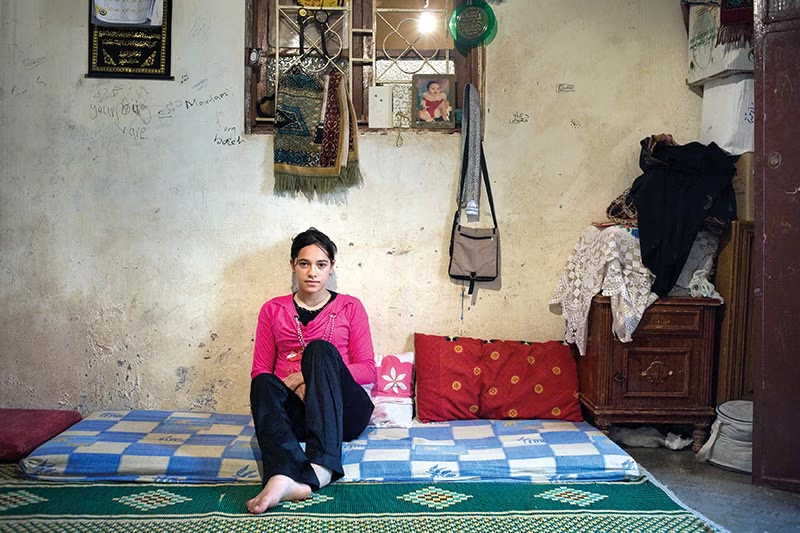
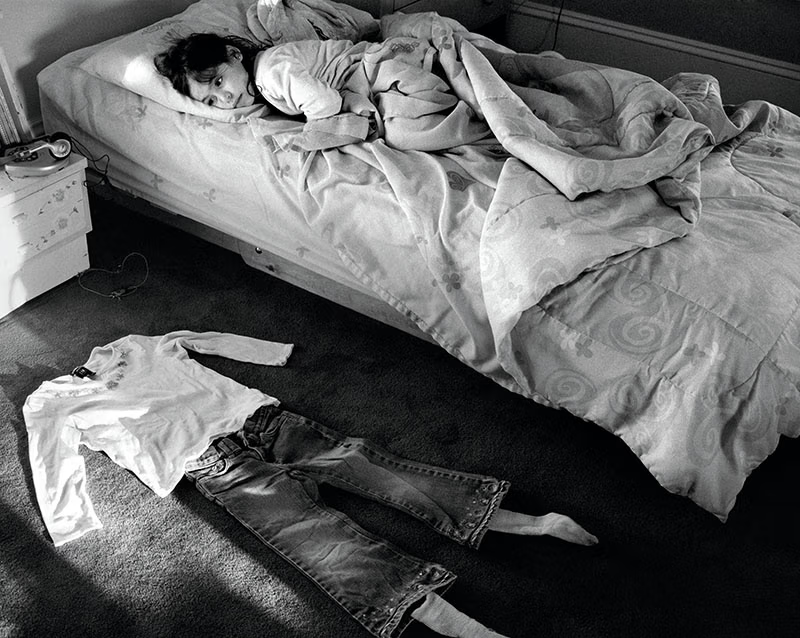
Top, Maryam, Bourj Al Shamali Refugee Camp, Tyre, Lebanon (2009). Part of the series A Girl and Her Room. In the Palestinian refugee camps, young women don’t have their own bedrooms. They roll their futons during the day as the room becomes a living area. Maryam personalised the wall behind her as her space. Above, Morning Before School, Brookline, Massachusetts (2004). Part of the series Family Moments. An image of Matar’s daughter, Maya, who used to lay her clothes on the floor the night before school. The images are a sweet reminder of the magical world of childhood expressed in the simple moments of daily life.
Matar’s first forays into photography outside the home came during a trip to Lebanon in the early 2000s, when she visited a Palestinian refugee camp and was shocked by the conditions. She shot some portraits. When she showed them to a photographer friend, he told her that she needed to achieve the same level of intimacy in all her photographs as she did in the ones of her own children. “That comment was life changing for me,” she says.
With time, Matar discovered that photographing strangers allowed for even greater freedom and intimacy, a collaborative approach free from preconceptions. She also found herself drawn to photographing girls and women. After losing her mother at a young age, Matar was raised by her Palestinian father. Growing up, “my role model and my hero was a man,” she says. “I didn’t have a role model for women in my life. My father was it. So it’s kind of interesting that I’m obsessed with womanhood in my work.”
Her early projects were inspired by her daughters. A Girl and Her Room, a series of portraits of teenagers in their bedrooms, captures girls navigating the delicate transitional period between childhood and adulthood, expressed through brash posters and bold paint colours, messy makeup tables and walls covered with Post-it notes and polaroids. Matar photographed girls in America and Lebanon—including Palestinian refugee camps—for the project. Many viewers confused images from the two countries, reinforcing the surprising universality of a project about individualism and self-expression.
It was the beginning of a cross-cultural approach that has gone on to characterise the majority of Matar’s work, despite the fact that she has lived in America for the past 40 years. “I live here. My home is here. My kids are growing up here. But my emotional connection to Lebanon in particular is very strong. I make my best work there,” she says. “I feel so inspired there. And maybe because I don’t live there, I’m able to see the quirkiness that people who live there stop seeing… I’m an insider, but I’m seeing it sometimes with the eyes of an outsider.”
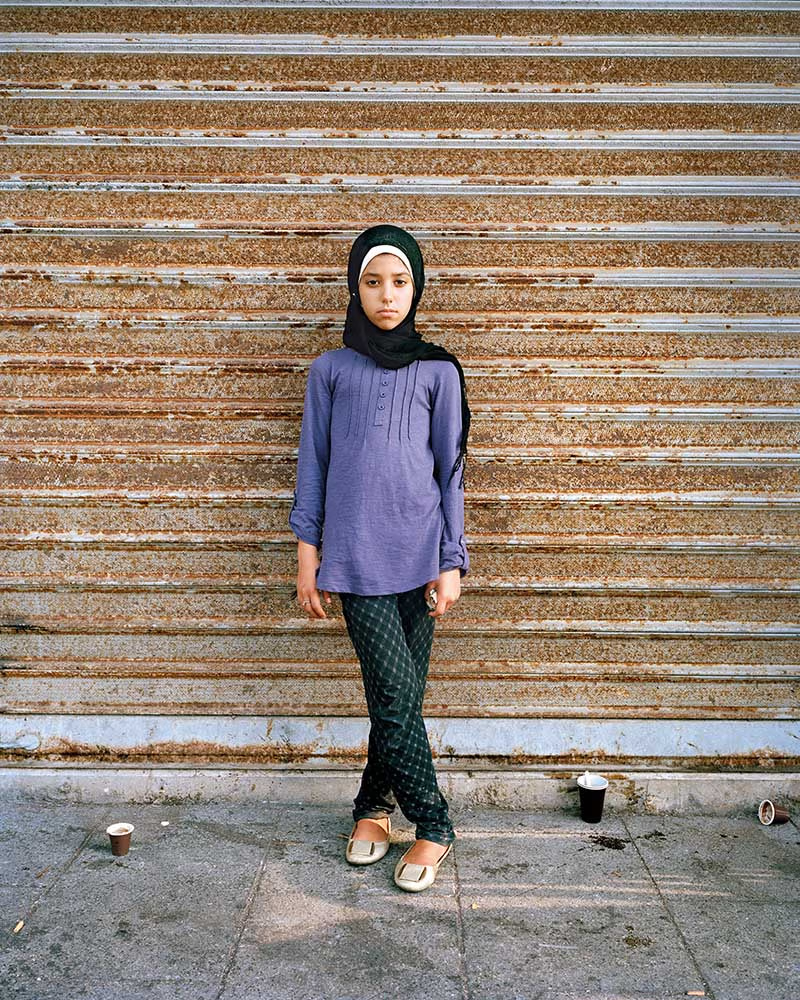
Nour, 12, Beirut (2014). Part of the series Invisible Children. The refugee problem had not yet become a crisis in Europe, but it was already advanced in Lebanon. Matar was struck by how invisible the children had become. She sought, with these images, to give them their dignity and portray their individuality.
Working across borders allows her to create subtle visual echoes that underline the similarities between women growing up in vastly different circumstances. In She, Matar photographed women in their twenties, focusing on each subject’s rootedness in her environment. A young African American woman standing beside a rusting pick-up truck in Ohio paralleled a Lebanese woman sitting inside the shell of an old car in Aabey, its burnt-out interior incongruously scattered with flowers. A redhead in a scarlet dress captured against a wall bearing graffiti in Boston might have been the sister of a flame-haired woman framed by hand-painted leaves on a crumbling wall in Beirut.
Herself constantly pulled between two countries, Matar says that part of her focus on belonging stemmed from being an Arab-American in the aftermath of 9/11. “A lot of my projects deal with my sense of identity,” she says. “I always photographed in both cultures, and for me it was a way of dealing with that ‘them versus us’. Am I Lebanese? Palestinian? Or am I American? I wanted to focus on that shared humanity through womanhood.”
Over the past year, the war in Gaza has made her increasingly aware of her Palestinian roots. She reads aloud a favourite quote from Lebanese artist and writer Etel Adnan: “I am both an American and an Arab and these identities are sometimes at odds with each other. Not every day, not even often, but every once in a while, I become a mountain that some terrifying earthquake has split.” “I get the chills,” Matar says. “That’s how I feel right now, being in the US being a Lebanese Palestinian.”
It is this exploration of Palestinian identity that is set to shape the next phase of her work, which she has long viewed as a form of autobiography. The war in Gaza is “so much about trying to erase a Palestinian identity, but it’s making it so much stronger,” she says. “I’m starting to photograph and collect the stories of this younger generation of Palestinians who are proudly holding on to their Palestinian identity, instead of just wanting to fit in. I think that’s a powerful new phenomenon and I’m finding it fascinating and hopeful. They are fighting for their lineage and against erasure.”




